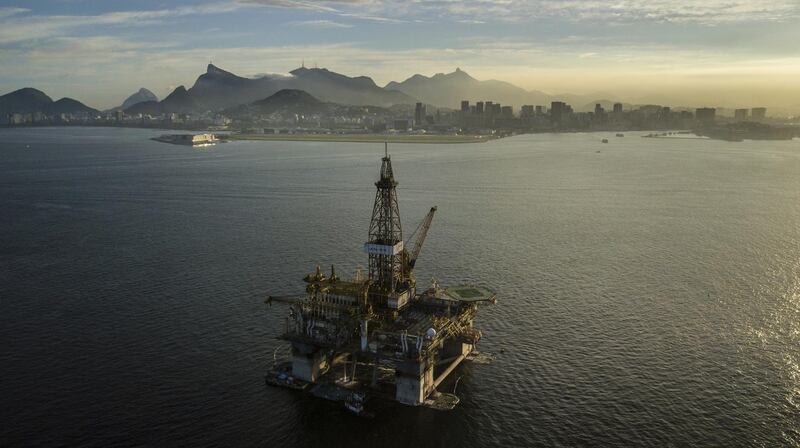Oil prices are likely to average between $60 and $70 per barrel in 2018 and are unlikely to breach these levels unless a geopolitical event, such as levying of fresh sanctions against Iran, change market dynamics, according to Fahad M Alturki, chief economist at Jadwa Investment, a Riyadh-based investment management and advisory firm.
“The rally that happened since this year has produced an average that is higher than what we are comfortable with,” Mr Alturki said. “We think that based on the fundamentals, this is not sustainable. We are more comfortable with the $60 to $70 per barrel [range]."
A higher average price is sustainable due to a "huge" shale oil production, which this year it’s likely to grow between 13 and15 per cent and perhaps 3 to 5 per cent the following year, he noted.
________________
Read More:
[ IMF expects GCC economic growth to pick up ]
________________
Mr Aturki said if Iran’s nuclear deal is spiked by the US, the price of oil might climb to $80 per barrel, a level that would give a boost to US shale producers.
Iran struck a nuclear deal three years ago after suspending parts of the nuclear development work and the United States and Europe responded by temporarily lifting some of the sanctions that buckled Iran’s economy. US President Donald Trump, however, has threatened to scrap the Joint Comprehensive Plan of Action agreement reached in 2016.
Mr Alturki, who was speaking at an alternative asset management conference in Abu Dhabi on Wednesday, said rising oil prices would help boost economic growth in the GCC, particularly in Saudi Arabia where the economy contracted last year. The kingdom's economy is likely to expand by 1.5 per cent this year, while the GCC as a whole is forecast to grow by 2 per cent this year, he added.
“While the growth for Saudi Arabia is marginal, it shows an uptrend,” the economist said.
Much of the resurgence of Saudi Arabia’s economic growth has come from an improvement in the government finances and a roll-back of austerity measures taken in the aftermath of the 2014 oil crash.
Other economists are also upbeat about the prospects of renewed economic growth in the Arabian Gulf region, which accounts for a third of the world's proven oil reserves. The International Monetary Fund in a report released on Wednesday said that the GCC would see a pick-up in economic growth in 2018 and 2019 after bottoming out last year.
The gross domestic product of oil exporters in the Middle East and North Africa grew 1.7 per cent on aggregate in 2017 compared to 5.4 per cent in 2016. It is expected to rise 2.8 per cent in 2018 and 3.3 per cent in 2019. Economic growth in the GCC contracted 0.2 per cent overall last year and Saudi Arabia, the Arab world’s largest economy, went into recession in 2018 for the first time since 2009.
GCC economic growth is expected to rise 1.9 per cent in 2018 and 2.6 per cent in 2019, the IMF said.





